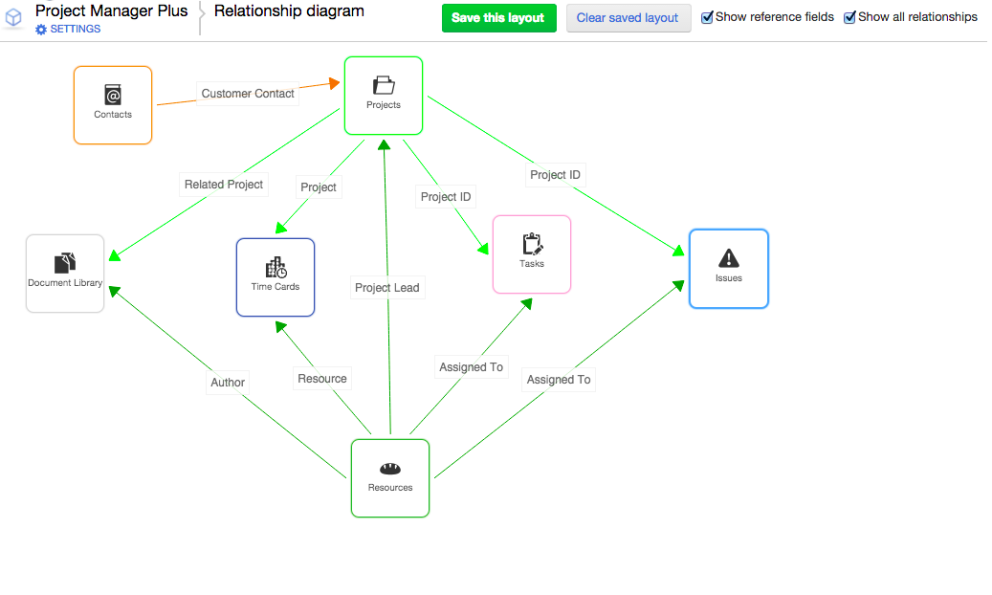
Let’s just get it out in the open, relationships can get messy. Am I right? Whether it’s at work, home or in your family we have all have had experiences with a complicated relationship. Your Quickbase application is not exempt from this epidemic, but there’s good news. In our last release, we introduced a tool which will make you a relationship expert — well, at least when it comes to Quickbase relationships: the Relationship Diagram.
Data relationships are the heart of your application. Depending on the size and structure of your application, the thought of how each table of data is related to others may cause you to go cross-eyed. Maybe you inherited an application from someone and are not sure how all the tables relate to each other. Or you may be the original creator of the application looking to make some changes to your data relationship architecture. Or maybe you are creating a conditional drop-down and need to visualize the tables and reference fields involved. In all of these situations and others, the Relationship Diagram can help you visualize the structure of your application.
To access the Relationship Diagram, you will need to have full administration access to the application; then, navigate to the app home page. In the upper left-hand corner, click on the image of a sprocket, followed by the hyperlinked word ‘Settings.’ On the next page, look for “App Management” in the column furthest to the right. Click on this link, and then click on “Show relationship diagram.” It may look a bit strange or even smooshed, but don’t worry — you can rearrange the diagram. You can and drag any table, represented by an icon, in the diagram and move it to another place on the page. Once set up just the way you want it, click “Save this layout” so that the next time you check out the diagram it will look the same.
When you click on a table/icon in the Relationship Diagram, it will show details about that table. This dialog pop-up gives you a nice summary of the table’s details, such as the number of fields or even the table size. Don’t worry if it gets in the way; you can either drag it to another area of the page or click on the ‘X’ in the upper right corner to close it. If you have a large number of tables or relationships, you may want to hide parts of the diagram to help you better understand it. In the upper right, you have the option to “Show reference fields” and “Show all relationships.” Unchecking either checkbox will prevent those options from being displayed in the diagram.
Don’t you wish figuring out other relationships was this easy?



